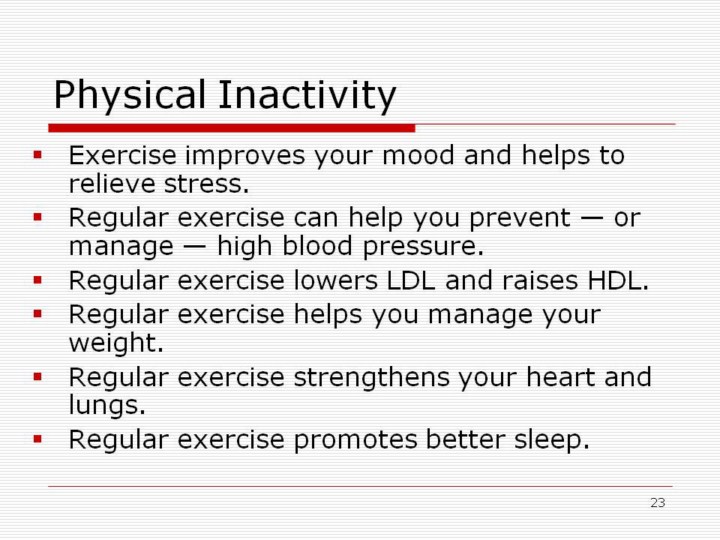Search for most updated materials ↑
| front |1 |2 |3 |4 |5 |6 |7 |8 |9 |10 |11 |12 |13 |14 |15 |16 |17 |18 |19 |20 |21 |22 |23 |24 |25 |26 |27 |28 |29 |30 |31 |32 |33 |34 |35 |36 |37 |38 |39 |40 |41 |42 |43 |44 |45 |46 |47 |48 |49 |50 |51 |52 |53 |54 |55 |56 |57 |58 |59 |60 |61 |62 |63 |review |
 |
Heart disease is almost twice as likely to develop in inactive people than in those who are more active. Regular physical activity can help control blood lipid abnormalities, diabetes and obesity. Aerobic physical activity can also help reduce blood pressure. Exercise improves your mood and helps to relieve stress. Regular exercise can help you prevent — or manage — high blood pressure. Regular exercise lowers LDL and raises HDL. Regular exercise helps you manage your weight. Regular exercise strengthens your heart and lungs. Regular exercise promotes better sleep.
|